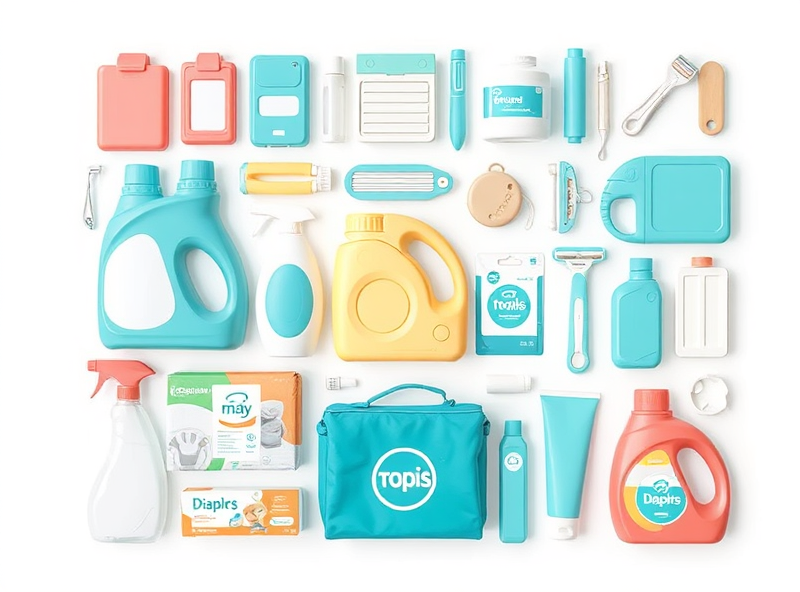
Procter & Gamble (PG) Stock: Deep Dive into the Consumer Goods Leader

Hello there, wonderful reader! Let’s take a friendly and detailed look at Procter & Gamble, known on the stock market by its ticker symbol PG. When you think about the products you use every single day – the toothpaste in the morning, the detergent for your clothes, the shampoo in the shower – there’s a very high chance that many of them come from P&G. This company is a true giant in the world of consumer goods, focusing on the essential items that people buy consistently, regardless of what the economy is doing. Understanding this focus on “consumer staples” is fundamental to understanding P&G as an investment.
Procter & Gamble is one of the largest and oldest consumer goods companies globally, with a history stretching back to 1837. Over nearly two centuries, it has built an unparalleled portfolio of household brands. While the company has strategically streamlined its brand lineup over the past decade to focus on its most profitable and fastest-growing categories, the power and recognition of its core brands remain immense. This brand equity is a significant competitive advantage.
The company’s business model is centered around developing, manufacturing, and marketing branded consumer products to consumers around the world. They operate through a vast and complex global supply chain and distribution network to get their products onto store shelves and into homes. Their success relies on understanding consumer needs, innovating to create better products, and effective marketing to build and maintain brand loyalty.
P&G’s Powerful Portfolio of Iconic Brands
The real strength of Procter & Gamble lies in its collection of billion-dollar brands. These aren’t just products; they are cultural fixtures in many households. Think about the trust and familiarity associated with names like Tide for laundry, Pampers for baby care, Gillette for shaving, Crest for oral care, Dawn for dish soap, and Bounty for paper towels. These brands have been carefully nurtured and marketed for generations, building deep connections with consumers.
P&G invests heavily in advertising and brand building to keep these names top-of-mind for consumers. They also focus on continuous innovation within these brand families, introducing new and improved versions of products to meet evolving consumer demands and maintain a competitive edge. This constant focus on brand health and innovation within established categories is a key driver of their consistent performance.
While they sold off many smaller or less strategic brands in recent years (like Duracell batteries, CoverGirl cosmetics, and many food and beverage brands), the remaining portfolio is highly focused on categories where P&G holds strong market positions and sees attractive growth potential. This strategic pruning has made the company more streamlined and arguably more focused on its core strengths.
Business Segments: The Pillars of P&G
P&G organizes its vast array of products into several key business segments. These segments represent the major categories of consumer staples where P&G competes globally. Understanding these segments gives investors insight into the different drivers of P&G’s revenue and profitability.
The Fabric Care & Home Care segment is often the largest, including powerhouse brands like Tide, Downy, Ariel, Dawn, and Swiffer. These are products essential for cleaning and maintaining homes, with consistent demand. Performance in this segment is influenced by factors like pricing, innovation in cleaning technology, and competition.
Baby, Feminine & Family Care includes major brands like Pampers, Luvs, Always, Tampax, Bounty, and Charmin. These products address fundamental personal and household needs. Demand is relatively stable, though influenced by birth rates and consumer preferences for comfort and performance. The scale of brands like Pampers gives P&G a significant presence in this essential category.
Health Care encompasses oral care (Crest, Oral-B) and personal health care (Vicks, Pepto-Bismol). These are products related to personal wellness and hygiene. Growth can be driven by innovation in oral care technology, seasonal demand for cold and flu remedies, and expanding access to personal health products globally.
Grooming includes shaving products (Gillette, Venus) and other grooming tools. This segment faces competition from both traditional rivals and newer direct-to-consumer brands. Innovation in razor technology and expanding into related grooming areas are important for growth.
Beauty includes hair care (Head & Shoulders, Pantene) and skin & personal care (Olay, Safeguard, Old Spice). This segment can be more sensitive to consumer trends and discretionary spending than other categories, but P&G’s strong brands maintain a significant presence. Innovation in product formulations and marketing trends are key here.
This diversification across essential, non-discretionary categories provides P&G with a degree of resilience. Even when consumers cut back on luxury items, they generally continue to purchase toothpaste, detergent, and diapers. This makes P&G’s revenue streams relatively stable compared to companies in more cyclical industries.
Financial Performance and Underlying Stability
When analyzing P&G’s financials, investors often highlight its consistent performance. While growth rates might not be as high as some technology or growth stocks, P&G typically delivers steady, predictable revenue and earnings. This stability is a major part of its appeal, especially for conservative investors or those nearing retirement.
Key metrics to watch include organic sales growth (sales growth excluding the impact of acquisitions, divestitures, and currency fluctuations), gross margin (profitability after accounting for the cost of goods sold), operating margin (profitability after operating expenses), and free cash flow generation. P&G has historically demonstrated strong performance in these areas, reflecting efficient operations and the pricing power of its brands.
The company’s scale allows for significant cost efficiencies in manufacturing, sourcing, and distribution. These efficiencies contribute to its solid profitability, even in a competitive market. P&G’s ability to translate revenue into strong free cash flow is particularly important, as this cash is used for investments, acquisitions, and returning value to shareholders.
The Power of the Dividend: A Dividend King
For many investors, the most compelling aspect of P&G stock is its extraordinary dividend history. P&G is one of a very small group of companies known as “Dividend Kings” – companies that have increased their dividend for at least 50 consecutive years. P&G’s streak is well over 60 years, a remarkable testament to its financial strength and commitment to shareholders.
This consistent and growing dividend provides a reliable income stream for investors, which can be particularly valuable in uncertain economic times. The ability to pay and consistently increase the dividend over such a long period, through various recessions and market cycles, speaks volumes about the resilience and profitability of P&G’s business model.
While the dividend yield (the annual dividend payment divided by the stock price) might fluctuate with the stock price, the consistent growth in the dividend payment itself is a key indicator of the company’s health and management’s confidence in future earnings. For income-focused investors or those looking for a stable component in their portfolio, P&G’s dividend is a major draw.
Global Operations and Market Dynamics
P&G’s operations span the globe, with significant sales generated outside of its home market in the United States. This global presence provides diversification and access to growth in emerging markets, where rising incomes and expanding middle classes are increasing demand for branded consumer goods. However, it also means navigating different economic conditions, consumer preferences, regulatory environments, and currency fluctuations in various countries.
Understanding the dynamics of key international markets and P&G’s strategy for growth in these regions is important for a complete picture of the company. Their ability to adapt their products and marketing to local tastes while maintaining global brand consistency is crucial for international success.
Risks and Challenges in the Consumer Goods Market
Despite its strengths, P&G is not without risks. The consumer goods market is intensely competitive. P&G faces competition from other large multinational corporations (like Unilever and Colgate-Palmolive), smaller niche brands that can be more agile and responsive to trends, and private label brands offered by retailers.
Changes in consumer preferences, driven by factors like health and wellness trends, sustainability concerns, or the rise of e-commerce and direct-to-consumer models, require P&G to constantly innovate and adapt its product offerings and distribution strategies. Failure to keep up with these trends could impact market share.
Rising costs for raw materials, packaging, and transportation can put pressure on profit margins if P&G cannot offset them through pricing or cost efficiencies. Currency fluctuations can also negatively impact reported earnings from international operations. While demand for staples is stable, significant economic downturns could still lead consumers to trade down to cheaper alternatives.
Innovation and Adapting to the Future
To stay competitive, P&G must continue to innovate. This includes developing new product formulations, improving packaging sustainability, leveraging digital technology for marketing and e-commerce, and optimizing its supply chain. Innovation is key not just for creating entirely new products, but also for improving existing ones and making them more appealing to modern consumers.
The company is also adapting to the changing retail landscape, particularly the growth of e-commerce. While their products are staples of physical stores, ensuring they have a strong presence and effective strategy in online channels is increasingly important for reaching consumers where they shop.
Conclusion: A Foundation for Stability and Income
In conclusion, Procter & Gamble (PG) is a global leader in the consumer staples sector, built on a foundation of powerful, trusted brands and efficient operations. Its focus on essential everyday products provides a degree of stability and resilience, making it a popular choice for investors seeking defensive characteristics and reliable income. With an unparalleled history of dividend growth and a commitment to maintaining the strength of its core brands through innovation and adaptation, P&G remains a significant company in the investment world. For those looking to add a layer of stability and a consistent income stream to their long-term portfolio, understanding the enduring appeal and operational strength of this consumer goods giant is essential.



